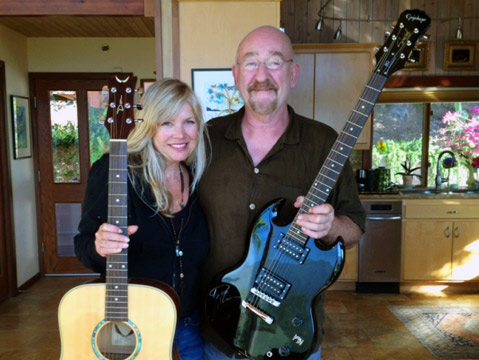JAMS and MAC Teach Music for Its Own Sake
S.B. Music Schools Foster Creative Thinking In Students

Standardized tests, mountains of homework, and class requirement upon requirement — few would argue that the demands upon K-12 students are lightweight. And while proponents of infamously underfunded music education programs across the states often cite improved test scores and enhanced cognitive abilities as a supplement for such analytical stresses, a pair of Santa Barbara music schools remind us: Music is also its own reward.
Enter Jasmine’s Alternative Music School (JAMS) and the Music and Arts Conservatory (MAC), two long-standing area institutions championing the study of music for the love of music and creative thinking, and all the brain boosts that come with it. This autumn sees both schools in the midst of raising funds — JAMS with a recent instrument swap meet, and MAC with an upcoming November 28 concert at First Congregational Church — and attendances downsizing, and both encountering the struggles music education programs face across the state generally.
JAMS founder Nancy Earle opened her nonprofit music space in 1996 following the death of her daughter, who was killed by a falling pine tree in Yosemite. “Music helped me heal, and in turn the mission is to help many people know the healing power of music,” she said.
JAMS offers free music classes to the underserved Eastside community, also doubling as a music exploration space, with instruments to try for free, as well as a for-rent recording area. JAMS gives students the chance to perform live, and artists like Glen Phillips and J.R. Richards have been known to give master classes. “The confidence that they get from performing live is such a positive change,” said teacher Scott Caretto. Helping students gain assurance as singers or guitar players, he said, gives them a sense of improved self-worth. “It helps them achieve other goals throughout life.”
Earle and Caretto, along with Earle’s son Cody and a handful of volunteers, foster a no-pressure environment for students to explore music. “We’re different in the sense we’re alternative. You don’t have to know how to read and write music in order to play it,” Earle said.
The Music and Arts Conservatory, founded by Lana Bodnar in 1989, emphasizes “enlightenment over the spotlight,” according to its website. Indeed, ask MAC instructors such as John Etsell how and why they teach, and they are sure to place emotional resonance above technical proficiency. In fact, it’s the very thing that brought Etsell, a former MAC student, back to the school that taught him.
Etsell said MAC helped him truly appreciate classical music, particularly chamber music, in a way that was approachable and personal. “The classical music world can get filled with pressures and crazy anxieties, and we try to minimize that through emphasizing that it’s about the music and loving that. There’s nothing really to be scared of,” he said.
Learning at MAC is not limited to sheet music and strings, either. Poetry classes, art classes, and music history classes round out the curriculum, with field trips and guest artists to boot. High school students can earn independent study and community service credits through MAC programs.
Misha Bodnar, a cellist who earlier in his music career was a Paris-based punk rocker touring with legends like Johnny Thunders and Suicide, encourages his students to approach their music with imagination and critical thinking. “It’s to get them really curious about all sorts of aspects of art, and to just get them excited about knowing that they can question what everyone’s been saying about how to do things,” he said. Besides helping students master the traditional composers, he’s been known to inspire cello covers of Nirvana, Metallica, and AC/DC in the name of creating a deeper connection to the instrument.
Attendance to MAC has dwindled somewhat over the course of its existence, an effect Etsell said is likely due to increased rigors to perform. Music and arts education, he feels, is precisely the antidote to today’s competitive résumé-building demands. “There’s no pressure or regimented curricula, and you’re not being tested. You’re just going to invest in yourself,” he said.
4•1•1
Jasmine’s Alternative Music School (JAMS) is located at 631 1/2 N. Milpas St. Call (805) 252-0562 or visit starjasminemusic.org for more information.
For more information on the Music and Arts Conservatory (MAC) call (805) 682-2370 or visit sbmac.org for more information.



